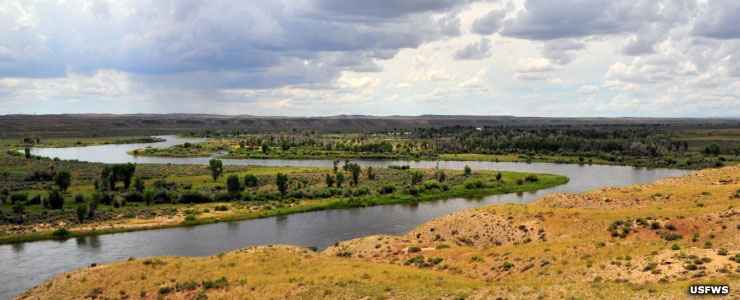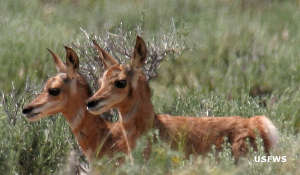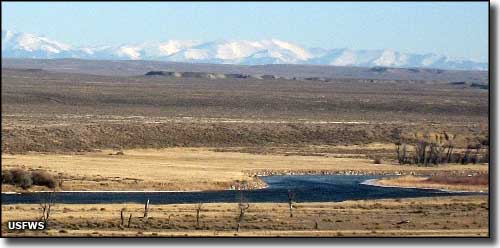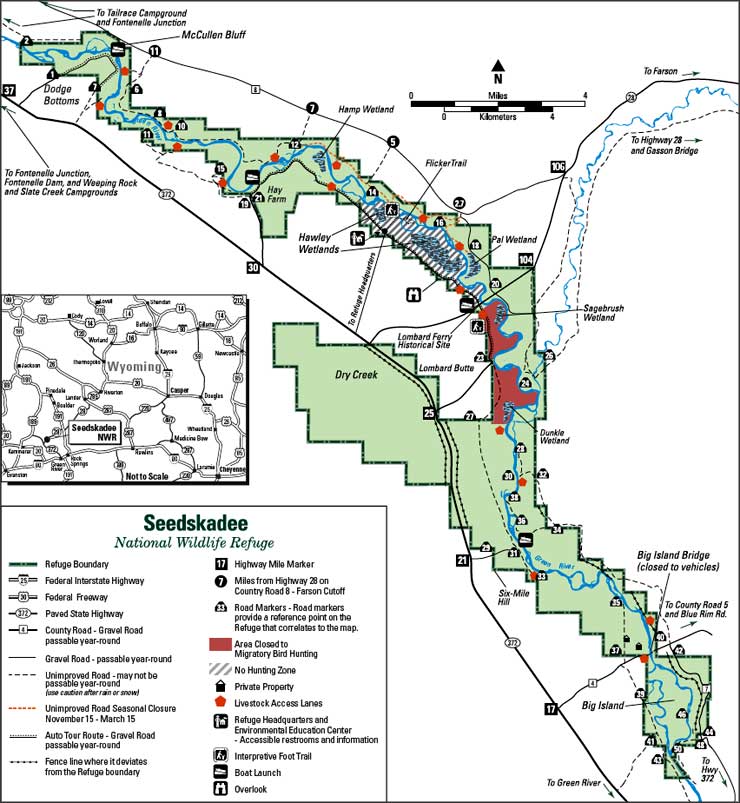Seedskadee National Wildlife Refuge

The Green River at Seedskadee National Wildlife Refuge

The Shoshone Indians spread into this area of Wyoming around 700 years ago. The Spanish hadn't arrived yet, hadn't brought horses yet. So the Shoshone hunted the bison and the pronghorn in this countryside as their forefathers had for thousands of years before them: they chased bison over cliffs and herded pronghorns into makeshift corrals where they were easy to catch and kill. They also hunted deer, elk, mountain sheep and sage grouse. "Seedskadee" was a corrupted form of their name for the "Green River" ("river of the prairie chicken").
The first Euro-Americans to come into the region arrived as representatives of John Jacob Astor's Pacific Fur Company in 1811. Donald Mackenzie, one member of that group, later joined the British Northwest Company and used his knowledge of the area to profitably trap beaver in the early 1820's. Jedediah Smith brought another party of American trappers through the area in 1824. Shortly after that, the first of the big Mountain Man Rendezvous' were held just to the west of where Seedskadee is now. In those days, a lot of the traffic crossed the Green River in the vicinity of Seedskadee NWR. There was even a Pony Express station built on the east side of the Green River, just above the confluence with the Big Sandy. A year later the first transcontinental telegraph wire was run through the area and the Pony Express was officially out of business.
As popular as the Seedskadee area was with fur trappers, emigrants and the Shoshone, it wasn't popular with homesteaders. Homesteading had to wait for the end of the Civil War. That was when people scattered all over the West and cattle and sheep ranching came into its own. Then the big freezes of 1886-1887 virtually wiped out the cattle business and many people abandoned the area.
As you hike around on the 27,230 acres of Seedskadee National Wildlife Refuge, you might come across the remains of old homesteads, even the old Pony Express station. Wagon ruts are still visible in the rock from the days when the Kinney Cutoff on the Oregon Trail was a popular route through here.
These days, you'll see far more mule deer, elk, moose, pronghorn, river otter, beaver, raccoon, red fox, coyote, badger and striped skunk on this property than people. The refuge offers miles of hiking trails in the river corridor in addition to the auto tour route that passes by the Hawley wetlands, the refuge headquarters and the Hamp wetlands. Habitats vary from riparian to wetland to grassland and sagebrush upland. The refuge is open from sunrise to sunset. Camping and fires are not allowed anywhere on the property.
To get there: Go west from Green River on Interstate 80 to the La Barge Road exit (Highway 372). The main entrance to the refuge is about 27 miles north from there. Once you see the sign and make the turn, follow the gravel road about 2.5 miles to the refuge headquarters.
Seedskadee National Wildlife Refuge was established in 1965 as a means to mitigate habitat lost by the construction of Fontenelle and Flaming Gorge Dams.

Seedskadee National Wildlife Refuge

Photo of pronghorn twins courtesy of L. Glass, US Fish & Wildlife Service
Lower photo and map of Seedskadee NWR courtesy of the US Fish & Wildlife Service